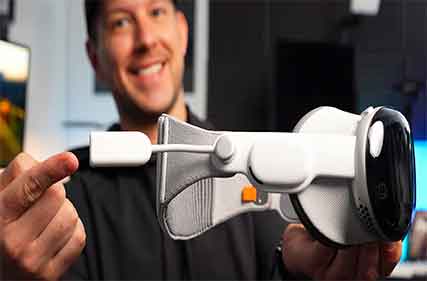
The ability to visualize highly specific information about individual plants and animals, all completely hands-free, will be invaluable to the sector in the coming years.
The application of augmented reality (AR) technology is disrupting multiple industries with real-life use cases.
The hands-free data visualization provided by AR not only improves productivity throughout the agribusiness value chain but also increases the efficiency and efficacy of training in agriculture, using simulations or real-time direction.
Against this backdrop, businesses will continue to adopt AR in the coming years, but high initial costs and limited investment will hinder widespread adoption in the short-term, says GlobalData, a leading data and analytics company.
GlobalData’s Thematic Intelligence report, “Augmented Reality in Agriculture,” reveals that the AR market is poised to grow from $22 billion in 2022 to $100 billion in 2030.
Aoife McGurk, Associate Thematic Intelligence Analyst at GlobalData, comments: “Until the last few centuries, the agriculture sector operated in more or less the same way for millennia. However, the fourth agricultural revolution brings new challenges for farmers to worry about – especially around limited agricultural resources. Agriculture must use the emerging technologies to improve efficiency and sustain our growing population with limited land and labor without worsening climate degradation.
AR can streamline training on farms, help technicians repair agricultural equipment more quickly, and support precision agriculture.
The crux of AR’s usefulness in farming is its capacity for hands-free data visualization, allowing farmers to access knowledge and insights without pausing other tasks. This has the potential to improve the productivity of all agricultural workers and help farmers increase the productivity of their resources.
McGurk continues: “The use of AR for agricultural training is slowly growing, teaching farm workers to detect disease in crops and livestock and assisting technicians with repairing and maintaining agricultural machinery. The next frontier for AR in farming is precision agriculture.”
The ability to visualize highly specific information about individual plants and animals, all completely hands-free, will be invaluable to the sector in the coming years.
McGurk concludes: “AR-enhanced precision agriculture can minimize the pollution and resource waste associated with agrochemicals and irrigation. By overlaying insights about crop health onto the physical world, AR assists farmers in ensuring these scarce resources are applied prescriptively. This prescriptive use of agricultural resources will be key in meeting the growing demand for food while minimizing environmental and climate degradation. In the long-run, this will alleviate the looming threats of climate change, environmental degradation, and pressure on limited resources.
“It is evident that AR has huge potential in agriculture industry. However, lack of knowledge, limited investments and initial high costs are bound to hinder its widespread adoption in the short-term.”
